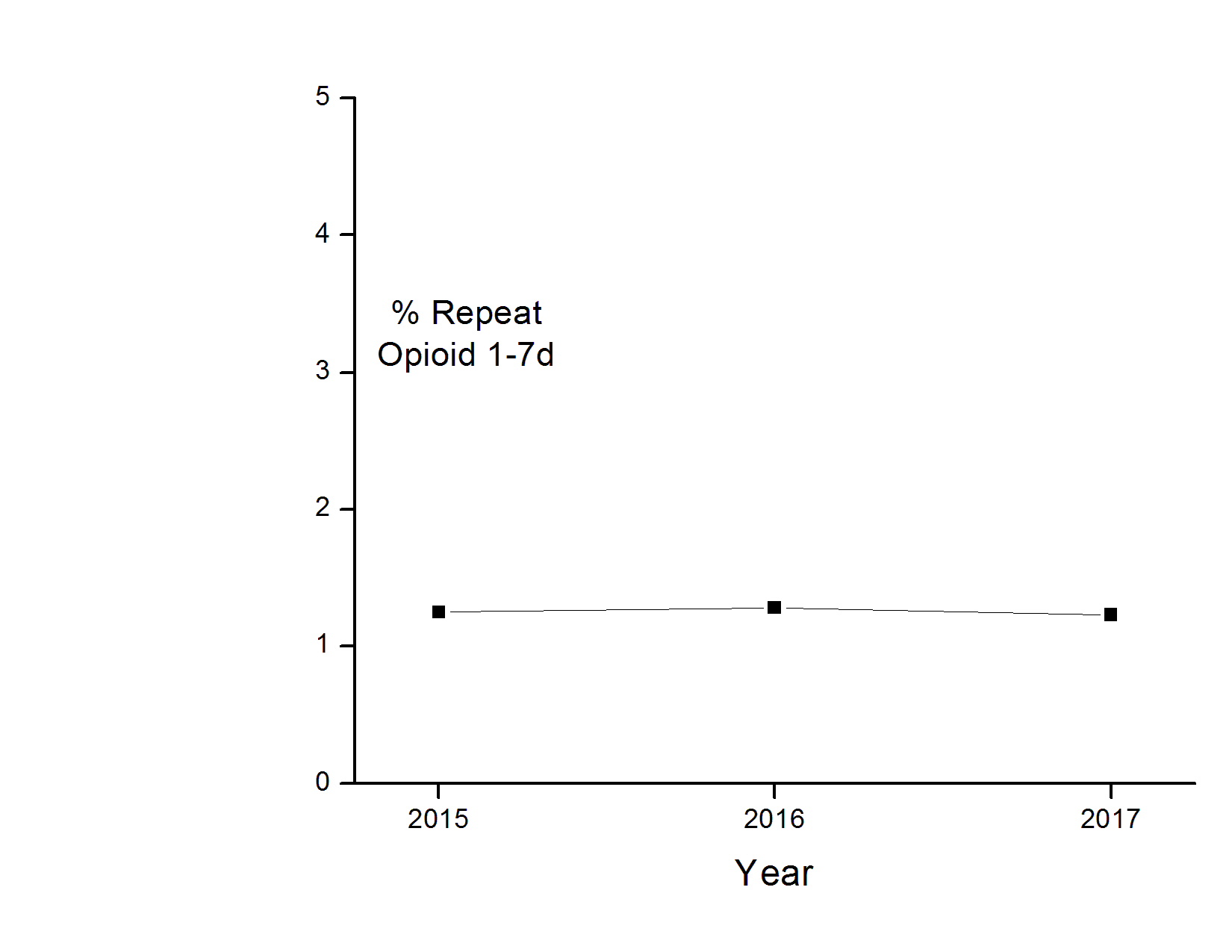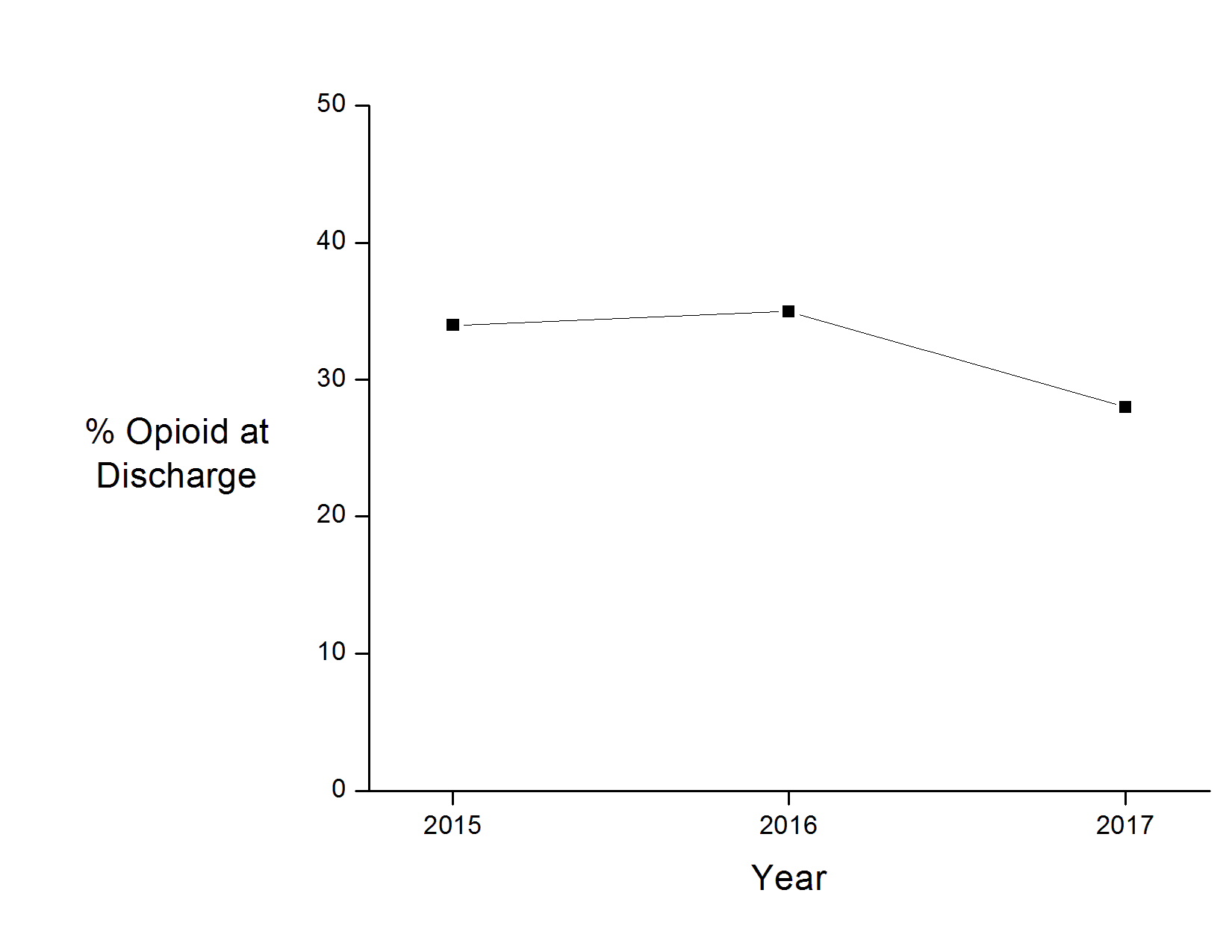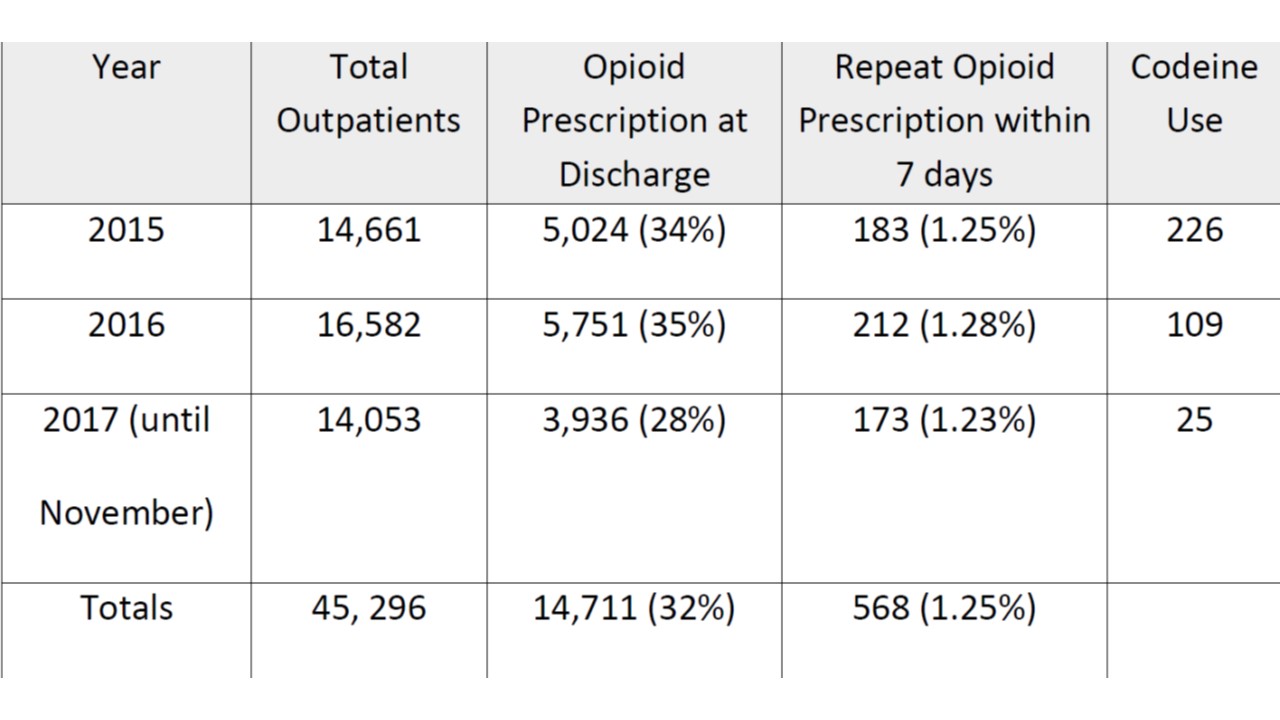NM-364
Decline of Opioid Prescribing in Pediatric Outpatient Surgery
Donohoe (Undergraduate Student, Drexel University) G, Litman R
Children's Hospital of Philadelphia, Philadelphia, Pennsylvan, United states
Introduction:
The opioid epidemic is a multi-faceted public health crisis affecting healthcare outcomes across diverse patient populations. Opioid prescriptions for home use after outpatient surgery have been implicated in fostering continued or illegal use of these drugs after the acute pain from the surgery has subsided.
Study Questions/Aims/Hypothesis:
The primary aim of this study is to determine opioid prescription patterns for children undergoing outpatient minor surgeries. We hypothesized that for a variety of reasons opioid prescriptions have declined over time. A secondary aim is to determine whether this pattern has influenced postoperative pain as evidenced by additional opioid prescriptions within 7 days following surgery.
Methods:
We obtained a de-identified electronic database of all children (less than 18 years of age) who underwent outpatient surgery that contained all demographic characteristics, surgical procedures, and opioid prescriptions for home use between the day of surgery and 7 days later. We excluded patients on a separate cardiac surgery service.
Results:
Between January 2015 and November 2017, 45,296 children underwent outpatient surgery at our institution or free-standing surgery centers (Table 1). Outpatient opioid prescriptions consisted mainly of acetaminophen with codeine, or some version of oxycodone or hydrocodone (Figure 1). The use of codeine steadily decreased each year. Although all opioid prescriptions decreased in 2017, there was a steady rate of additional opioid prescriptions within 7 days of surgery (Figure 2).
Discussion and Conclusions:
As expected, for a variety of reasons, opioid prescriptions for home use decreased in 2017 compared with the previous two years. This did not result in an apparent increase in postoperative pain at home as evidenced by the unchanged rate of additional prescriptions in the first 7 days after surgery. Further analysis is required to determine additional patient or surgical characteristics that influence the rate of need for additional opioids.
Top














